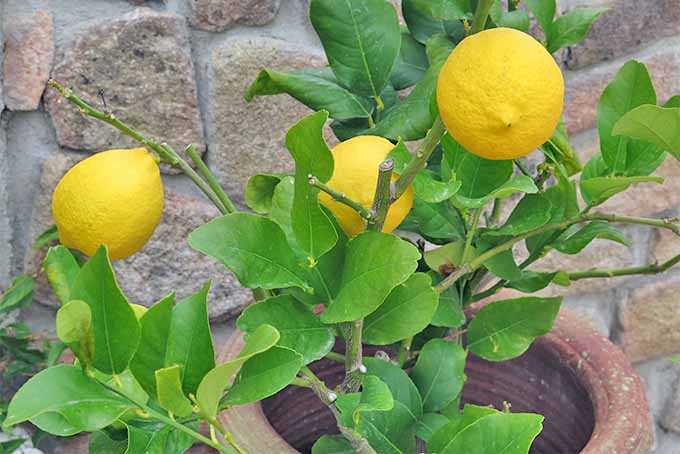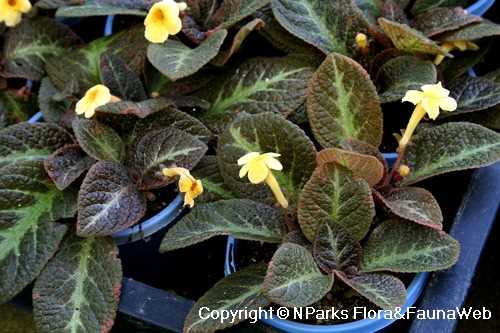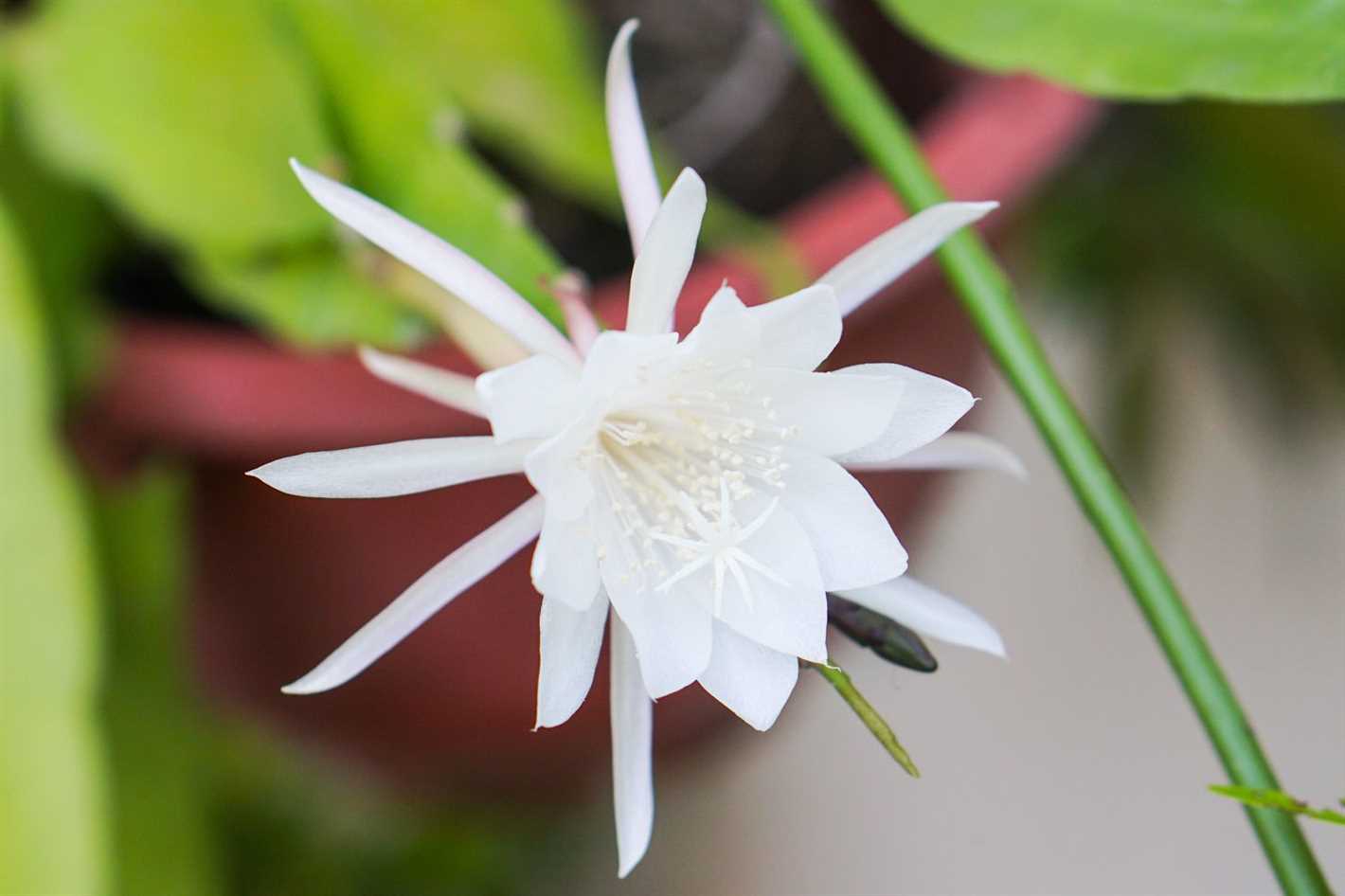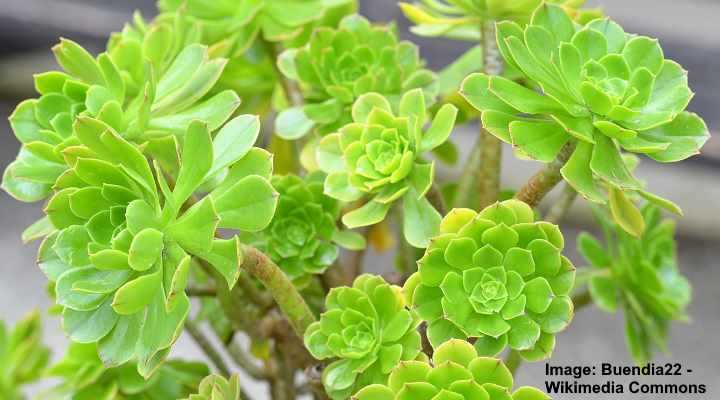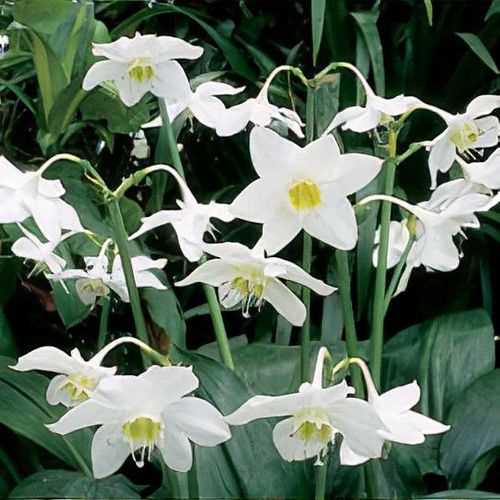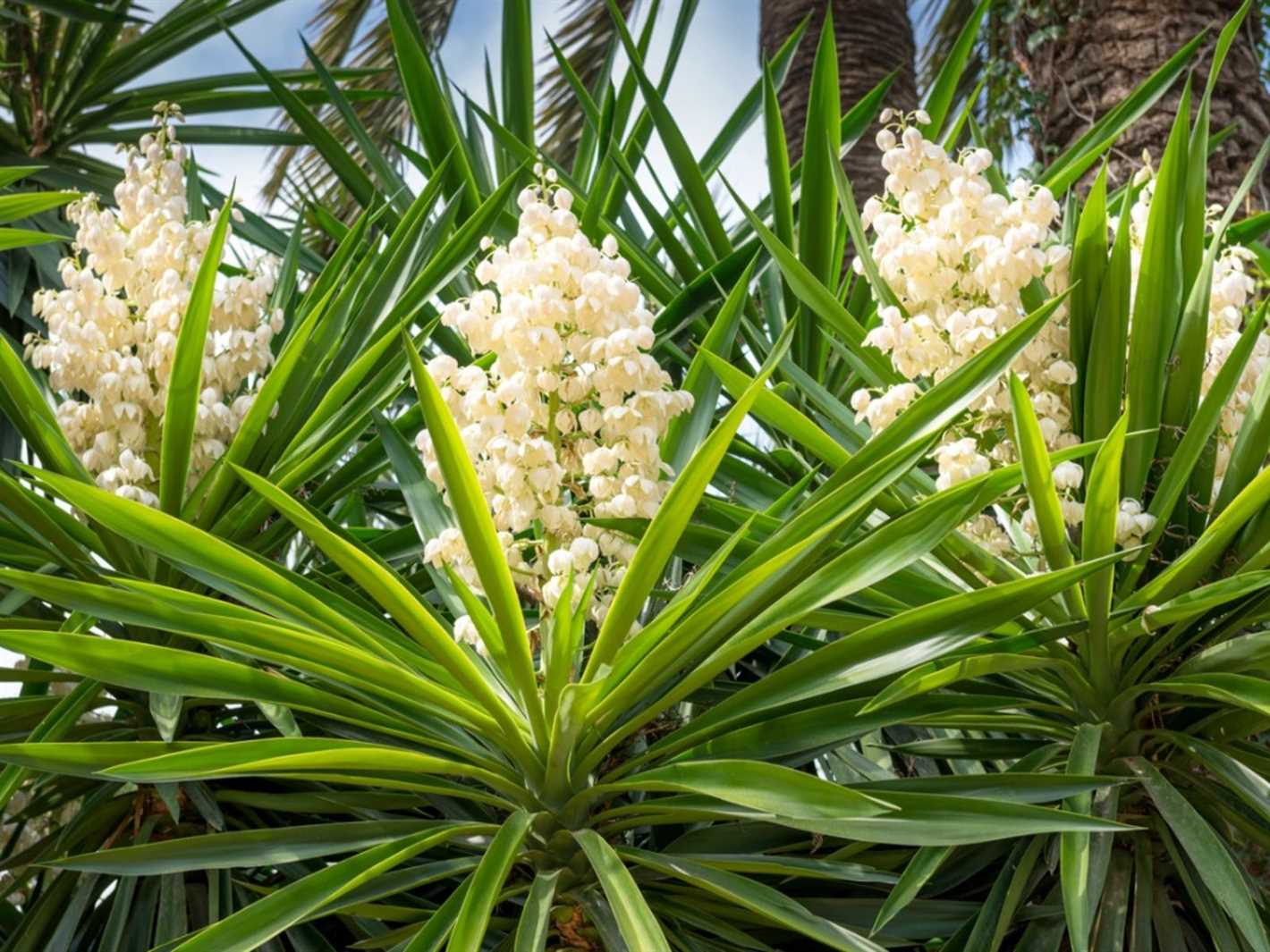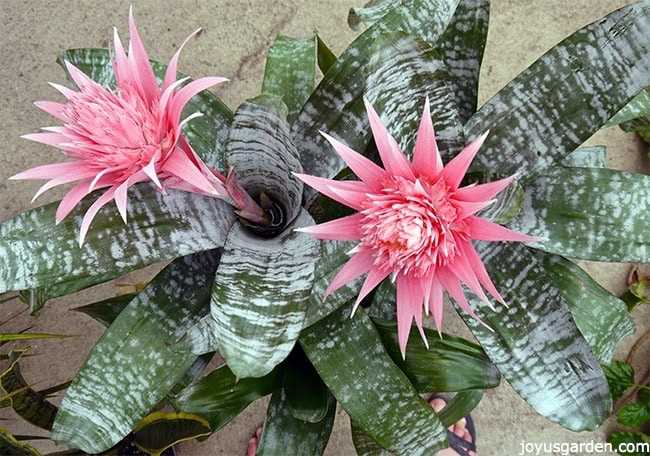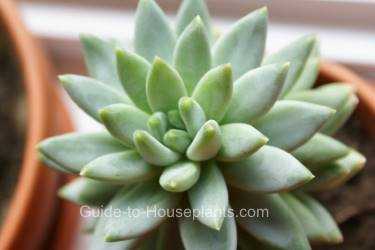- Mimosa Care
- Watering
- Light
- Temperature
- Humidity
- Fertilizing
- Pruning
- Pests
- Propagation
- Common Problems
- Learn How to Take Care of Your Mimosa Plant
- Light Requirements
- Watering
- Temperature
- Humidity
- Fertilizer
- Pruning
- Potting
- Pests
- Mimosa Photo
- Explore Beautiful Photos of Different Mimosa Varieties
- Mimosa Species
- Discover the Various Species of Mimosa
- 1. Mimosa pudica
- 2. Mimosa pigra
- 3. Mimosa tenuiflora
- 4. Mimosa diplotricha
- 5. Mimosa borealis
- 6. Mimosa aculeaticarpa
- 7. Mimosa scabrella
- Mimosa Cultivation
- Find Out How to Cultivate Mimosa Plants successfully
- Choose the Right Location
- Prepare the Soil
- Planting Mimosa
- Watering and Fertilizing
- Pruning
- Pests and Diseases
- Conclusion
- Common Problems
- 1. Overwatering
- 2. Underwatering
- 3. Lack of Light
- 4. Pests
- 5. Temperature Stress
- 6. Nutrient Deficiencies
- 7. Improper Pruning
- Learn How to Deal with Common Issues When Growing Mimosa
- 1. Overwatering
- 2. Underwatering
- 3. Pests
- 4. Fungal Diseases
- 5. Environmental Stress
- Q&A:
- What is Mimosa?
- How should I care for my Mimosa plant?
- Is Mimosa a fast-growing plant?
- What are some common species of Mimosa?
- What are some tips for propagating Mimosa plants?
- What are some pests that can affect Mimosa plants?
- Are Mimosa plants toxic to pets?
- Video: How to grow Sensitive Plants (2019 Hanson Box)
If you are looking for a unique and beautiful plant to add to your collection, look no further than the mimosa. The mimosa, also known as Mimosa pudica or sensitive plant, is a popular choice among plant enthusiasts due to its intriguing characteristics and vibrant appearance. In this article, we will explore everything you need to know about taking care of the mimosa, its different species, and even provide some stunning photos for you to enjoy.
The mimosa is a tropical plant native to South and Central America, but it can also be found in other parts of the world. One of its most fascinating features is its sensitivity to touch. When touched or exposed to heat, the mimosa’s leaves fold inward, giving the plant a whimsical and delicate appearance. This unique behavior has earned it the nickname “sensitive plant.”
In terms of care, the mimosa requires a moderately humid environment and indirect sunlight. It is important to keep the soil consistently moist but not waterlogged to prevent root rot. The mimosa is a relatively fast-growing plant and can benefit from regular pruning to maintain its shape. Additionally, it is recommended to feed the plant with a balanced fertilizer every few weeks during the growing season.
There are several species of mimosa, each with its own distinct characteristics. Mimosa pudica is the most commonly seen variety, known for its pink flowers and sensitive leaves. Mimosa strigillosa, on the other hand, displays yellow flowers and is more tolerant of drought conditions. Another interesting species is Mimosa tenuiflora, also called “Jurema,” which is known for its medicinal properties and is used in traditional medicine in certain cultures.
To fully appreciate the beauty of the mimosa, take a look at the photos below. The vibrant colors and unique leaf patterns make the mimosa a standout addition to any indoor or outdoor space. With proper care and attention, this captivating plant can thrive and bring joy to its caretaker for years to come.
Mimosa Care
Watering
Mimosas prefer consistently moist soil, but be careful not to overwater as this can cause root rot. Water thoroughly when the top inch of soil feels dry, and make sure the pot has good drainage to prevent waterlogging.
Light
Mimosas thrive in bright, indirect light. Place your plant near a window where it can receive bright, filtered light. Avoid placing it in direct sunlight as this can scorch the leaves.
Temperature
Mimosas prefer warm temperatures between 60°F and 75°F (15°C to 24°C). Avoid exposing the plant to extreme temperature fluctuations and drafts, as they can cause leaf drop.
Humidity
Mimosas enjoy higher humidity levels. If the air in your home is dry, you can increase humidity by placing a humidifier near the plant or by placing the pot on a tray filled with pebbles and water.
Fertilizing
Feed your mimosa plant with a balanced houseplant fertilizer once a month during the growing season (spring and summer). Follow the instructions on the fertilizer packaging for the correct dosage.
Pruning
Prune your mimosa plant to maintain its shape and remove any dead or damaged leaves. Use clean pruning shears and make cuts just above a leaf node. Pruning is best done in spring or early summer.
Pests
Keep an eye out for common houseplant pests such as aphids, mealybugs, and spider mites. If you notice any pests, treat them with an appropriate insecticide or by wiping the leaves with a mild soap and water solution.
Propagation
Mimosas can be propagated through stem cuttings. Take a 4-6 inch cutting from a healthy, mature plant and remove the lower leaves. Dip the cut end in rooting hormone and plant it in a well-draining soil mix. Keep the soil moist and place the cutting in a warm, bright location.
Common Problems
- Yellowing leaves: This can be a sign of overwatering or underwatering. Adjust your watering routine accordingly.
- Leaf drop: Exposure to extreme temperatures or drafts can cause leaf drop. Make sure to keep your mimosa plant in a stable environment.
- Pests: Aphids, mealybugs, and spider mites can infest mimosa plants. Treat them with appropriate measures as mentioned above.
Learn How to Take Care of Your Mimosa Plant
Mimosa plants, also known as sensitive plants, are popular houseplants known for their delicate leaves that close up when touched. Here are some tips on how to take care of your mimosa plant:
Light Requirements
Mimosa plants prefer bright indirect light, so place them near a window where they can get filtered sunlight. Avoid direct sunlight, as it can scorch their leaves.
Watering
Mimosa plants require regular watering to keep their soil evenly moist. Allow the top inch of soil to dry out before watering again. Be careful not to overwater, as this can lead to root rot.
Temperature
Mimosa plants thrive in temperatures between 65°F and 75°F (18°C-24°C). Avoid placing them in areas with extreme temperature fluctuations or drafts.
Humidity
Mimosa plants prefer high humidity levels, so consider using a humidifier or placing a tray of water near the plant to increase humidity. Misting the leaves with water can also help maintain humidity.
Fertilizer
Feed your mimosa plant with a balanced liquid fertilizer every 2-4 weeks during the growing season (spring and summer). Be sure to dilute the fertilizer according to the package instructions.
Pruning
To maintain a compact shape, regularly prune your mimosa plant by trimming the stems and removing any dead or yellowing leaves. Pruning also encourages new growth.
Potting
Repot your mimosa plant every 1-2 years to provide fresh soil and room for growth. Choose a pot that has drainage holes to prevent waterlogging.
Pests
Keep an eye out for common houseplant pests such as mealybugs, spider mites, and aphids. If you notice any pests, treat your mimosa plant with a suitable insecticide or wipe the leaves with a mild soap and water solution.
By following these care tips, you can enjoy a healthy and thriving mimosa plant in your home. Remember to observe your plant and adjust the care routine as needed. Happy gardening!
Mimosa Photo
Here are some beautiful photos of different species of Mimosa:
- Mimosa pudica: This species of Mimosa is known for its sensitive leaves that fold up when touched.
- Mimosa tenuiflora: Also known as Jurema, this Mimosa species is native to Brazil and is often used for its medicinal properties.
- Mimosa pigra: Commonly known as the giant sensitive plant, this species is classified as an invasive weed in many regions.



These photos showcase the beauty and diversity of Mimosa plants. Whether it’s the delicate leaves of Mimosa pudica or the vibrant flowers of Mimosa tenuiflora, each species has its unique charm.
Explore Beautiful Photos of Different Mimosa Varieties
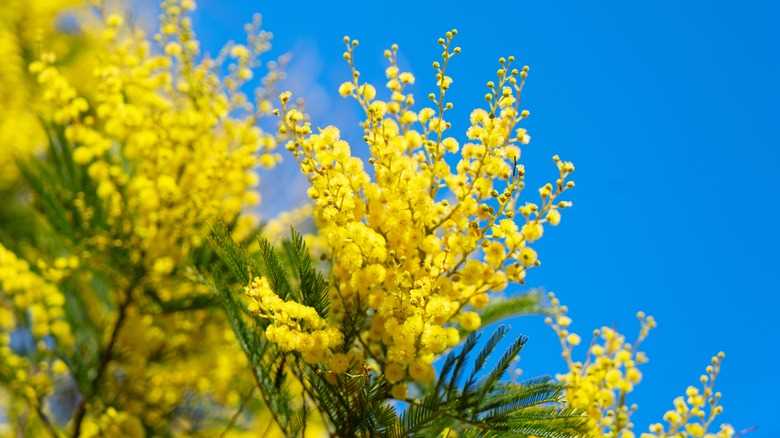
If you’re a fan of the Mimosa plant, you’ll be delighted to know that there are several different varieties to choose from. Each variety has its own unique characteristics and can add a touch of beauty to any garden or indoor space. Here are some beautiful photos of different Mimosa varieties that you can explore:
Mimosa pudica: Also known as the “Sensitive Plant” or “Touch-Me-Not,” Mimosa pudica is famous for its unique folding leaflets that close when touched. The plant features delicate pink flowers that have a fluffy appearance, creating a beautiful contrast with its fern-like leaves.
Mimosa hostilis: This Mimosa variety, also called “Jurema,” has beautiful white flowers that form in clusters. The tree itself can grow up to 8 meters tall, and its bark is known for its medicinal properties. Mimosa hostilis is commonly found in South America.
Mimosa tenuiflora: Native to parts of Mexico, South America, and Central America, Mimosa tenuiflora is a thorny shrub that can reach up to 8 meters in height. It has beautiful fern-like leaves and small, yellow flowers that give off a sweet fragrance.
These are just a few examples of the stunning Mimosa varieties you can find. Whether you prefer the delicate beauty of Mimosa pudica or the majestic stature of Mimosa hostilis, there’s a Mimosa variety out there that will captivate your senses and bring joy to your space.
Mimosa Species
- Mimosa pudica: Also known as the sensitive plant, this species is famous for its ability to close its leaves in response to touch or other stimuli. It is native to Brazil but can now be found in many tropical regions around the world.
- Mimosa tenuiflora: Also known as Jurema or Tepezcohuite, this species is native to South America. It is a tree-like shrub with fern-like leaves and produces pink flowers. Its bark is used in traditional medicine and has been studied for its potential therapeutic properties.
- Mimosa diplotricha: Also known as the giant sensitive plant or the creeping sensitive plant, this species is native to Central and South America. It is a vine-like plant that can quickly cover large areas. It has thorns and produces pink or purple flowers.
There are many other species of Mimosa, each with its own unique characteristics. Some are prized for their ornamental value, while others have medicinal properties or play important ecological roles. Regardless of the species, taking care of Mimosa plants generally involves providing them with well-draining soil, adequate sunlight, and regular watering.
If you are interested in growing Mimosa, it’s important to research the specific species you are interested in to ensure you can meet its specific care requirements.
Overall, Mimosa plants are fascinating and beautiful additions to any garden or indoor space. Their unique leaf movements and delicate flowers make them a joy to observe and care for.
Discover the Various Species of Mimosa
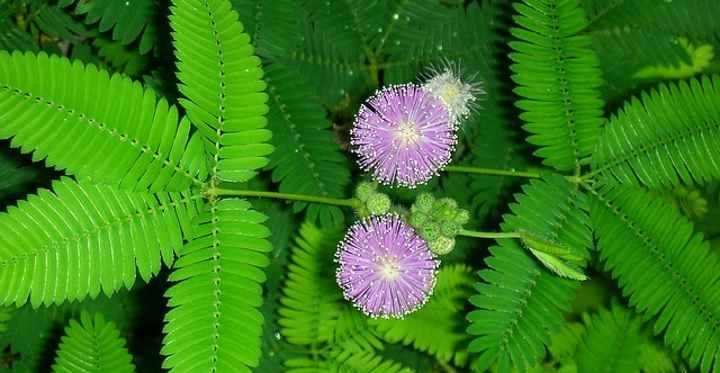
Mimosa is a genus of approximately 400 species of flowering plants in the pea family, Fabaceae. These plants are native to tropical and subtropical regions around the world, including the Americas, Africa, and Asia. Each species of Mimosa has its own unique characteristics and requirements, making them an intriguing group of plants for enthusiasts and botanists alike.
1. Mimosa pudica
Mimosa pudica, commonly known as the sensitive plant or touch-me-not, is perhaps the most well-known species of the genus. This plant is famous for its unique ability to fold its leaves inwards when touched or exposed to sunlight. It is native to Central and South America and is often grown as a houseplant or in gardens for its fascinating leaf movements.
2. Mimosa pigra
Mimosa pigra, also known as the giant sensitive plant, is a species native to tropical regions of America, Africa, and Asia. It is an invasive plant in many parts of the world and is considered a weed. Mimosa pigra can quickly colonize and dominate an area, outcompeting native plants. Its beautiful pink flowers and fern-like foliage make it an attractive plant, but its invasive nature poses a threat to ecosystems.
3. Mimosa tenuiflora
Mimosa tenuiflora, commonly referred to as Jurema or Tepezcohuite, is a species native to the northeastern region of Brazil. It is a small, thorny tree or shrub with feathery, bipinnate leaves. Mimosa tenuiflora is culturally significant in indigenous communities of Brazil and Mexico, where its bark is traditionally used for various medicinal purposes.
4. Mimosa diplotricha
Mimosa diplotricha, also known as the giant false sensitive plant or giant mimosa, is a vine-like species native to Central and South America. It has a sprawling growth habit and can quickly cover large areas. Mimosa diplotricha produces showy, globular, pink flowers and has been introduced as an ornamental plant in some regions. However, it is considered invasive and can become a problematic weed if not properly managed.
5. Mimosa borealis
Mimosa borealis, commonly known as the powderpuff tree or sleepy mimosa, is a small tree or shrub native to Mexico and Central America. It gets its name from its fluffy, pink flowers, which resemble powder puffs. Mimosa borealis is valued for its ornamental beauty and is often cultivated as an attractive addition to gardens and landscapes.
6. Mimosa aculeaticarpa
Mimosa aculeaticarpa, also called the catclaw mimosa or wait-a-minute bush, is a thorny shrub native to regions of the southwestern United States and northern Mexico. It has characteristic hooked spines that can latch onto clothing or skin, earning it the name “wait-a-minute bush.” Mimosa aculeaticarpa is drought-tolerant and adapts well to arid, desert climates.
7. Mimosa scabrella
Mimosa scabrella, commonly known as the bristleleaf mimosa or Brazilian ironwood, is a tree species native to South America. It is highly valued for its timber, which is durable and used in construction, furniture making, and flooring. Mimosa scabrella has feathery, compound leaves and produces attractive, spherical flower clusters.
These are just a few examples of the diverse species within the Mimosa genus. Each species has its own unique characteristics, cultural significance, and ecological impact. Exploring the various species of Mimosa can be a fascinating journey into the rich diversity of the plant kingdom.
Mimosa Cultivation
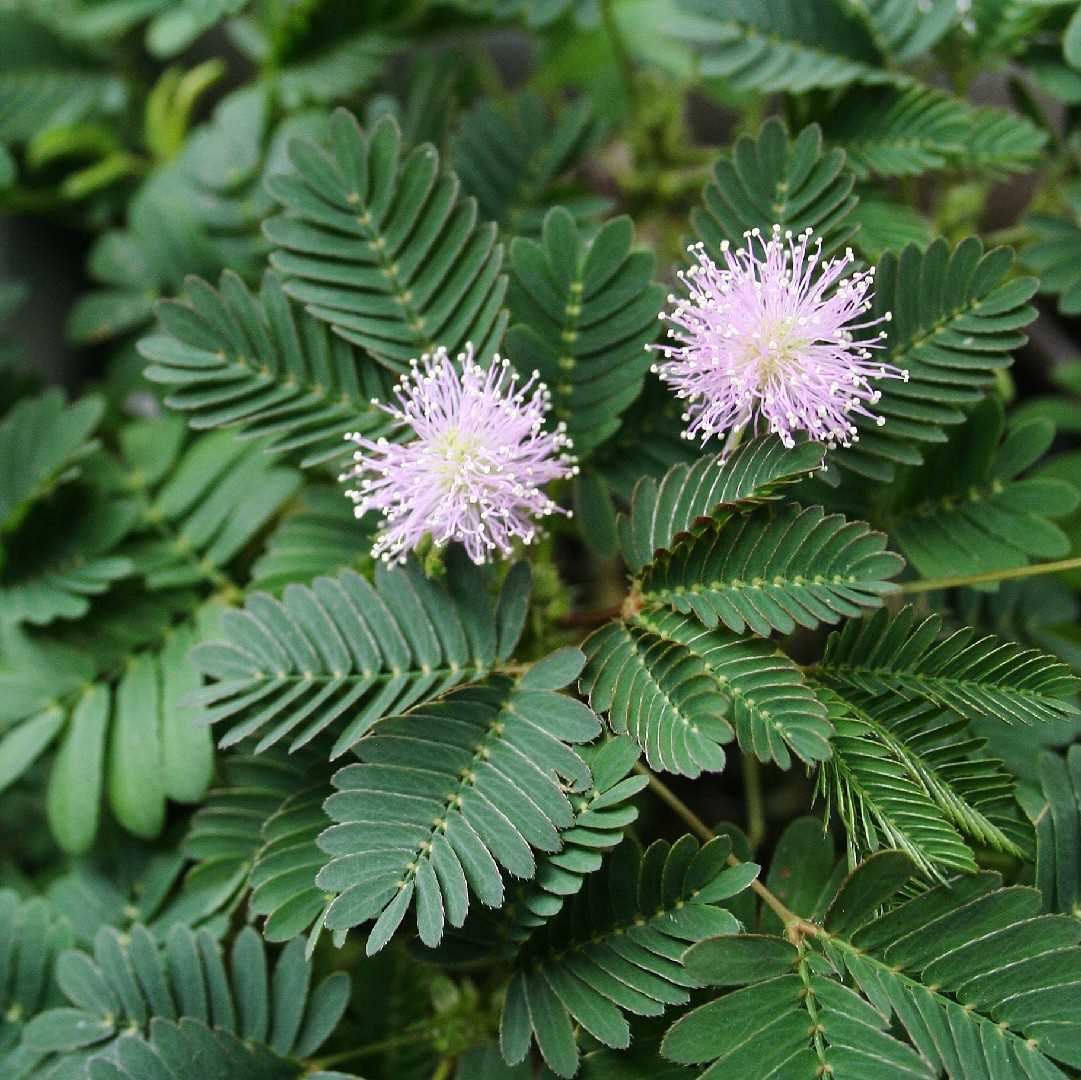
Mimosa, also known as the sensitive plant or touch-me-not, is a beautiful and unique plant that can be grown both indoors and outdoors. Here are some key aspects to consider when cultivating mimosa:
- Choosing the Right Location: Mimosa plants grow well in well-lit areas that receive partial sunlight. It’s important to find a location that provides a good balance of sunlight and shade.
- Soil Requirements: Mimosa plants prefer well-draining soil that is rich in organic matter. A mixture of peat moss, perlite, and sand can be used to create a suitable potting mix.
- Watering: It’s essential to water mimosa plants regularly to keep the soil moist but not soggy. Allow the top inch of soil to dry out before watering again. However, make sure not to let the plant sit in standing water.
- Fertilization: Feed mimosa plants with a balanced liquid fertilizer once a month during the growing season (spring and summer). Avoid over-fertilization as it can lead to leggy growth.
- Pruning: Regular pruning helps to maintain the shape and size of mimosa plants. Pinching back the growing tips will stimulate bushier growth.
- Protection from Frost: If you live in a region with cold winters, it’s important to protect your mimosa plant from frost. Move potted plants indoors or cover them with blankets and mulch for added insulation.
- Pests and Diseases: Mimosa plants are relatively resistant to pests and diseases. However, they can occasionally be affected by aphids, spider mites, or fungal infections. Regularly inspect the plant for any signs of infestation or disease and take appropriate measures if necessary.
By following these cultivation tips, you can enjoy the beauty of mimosa plants in your garden or indoor space. Remember to provide them with the care they need to thrive and flourish.
Find Out How to Cultivate Mimosa Plants successfully
If you’re interested in cultivating mimosa plants, known for their delicate fern-like leaves and vibrant flowers, you’re in luck. Mimosa plants are relatively easy to grow and can thrive in a variety of settings. Here are some tips to help you cultivate mimosa plants successfully:
Choose the Right Location
Mimosa plants prefer full sunlight but can tolerate partial shade. Make sure to choose a location that receives at least six hours of direct sunlight per day. Avoid areas with strong winds, as they can damage the plant’s delicate leaves.
Prepare the Soil
Mimosa plants grow best in well-draining soil. Before planting your mimosa, amend the soil with organic matter such as compost or peat moss to improve its texture and drainage. Mimosa plants also prefer slightly acidic soil with a pH between 6.0 and 6.5.
Planting Mimosa
- Plant mimosa plants in early spring after the danger of frost has passed.
- Dig a hole that is twice as wide and as deep as the plant’s root ball.
- Place the plant in the hole and backfill with soil, gently firming it around the roots.
- Water the plant thoroughly after planting.
Watering and Fertilizing
Once established, mimosa plants require regular watering. Water deeply, allowing the top inch of soil to dry out before watering again. Be careful not to overwater, as this can lead to root rot.
During the growing season, fertilize your mimosa plant every 4-6 weeks with a balanced fertilizer. Follow the package instructions for the recommended dosage.
Pruning
Prune mimosa plants in late winter or early spring to remove any dead or damaged branches. You can also prune to shape the plant and promote denser growth. Avoid heavy pruning, as mimosa plants do not respond well to drastic pruning.
Pests and Diseases
Mimosa plants are generally resistant to pests and diseases. However, they can occasionally be susceptible to aphids, spider mites, and powdery mildew. Keep an eye out for any signs of infestation and treat them promptly with appropriate pest control measures.
Conclusion
With the right care and attention, your mimosa plants will reward you with their beautiful foliage and vibrant flowers. Follow these tips and enjoy the beauty of mimosa plants in your garden or indoor space.
Common Problems
1. Overwatering
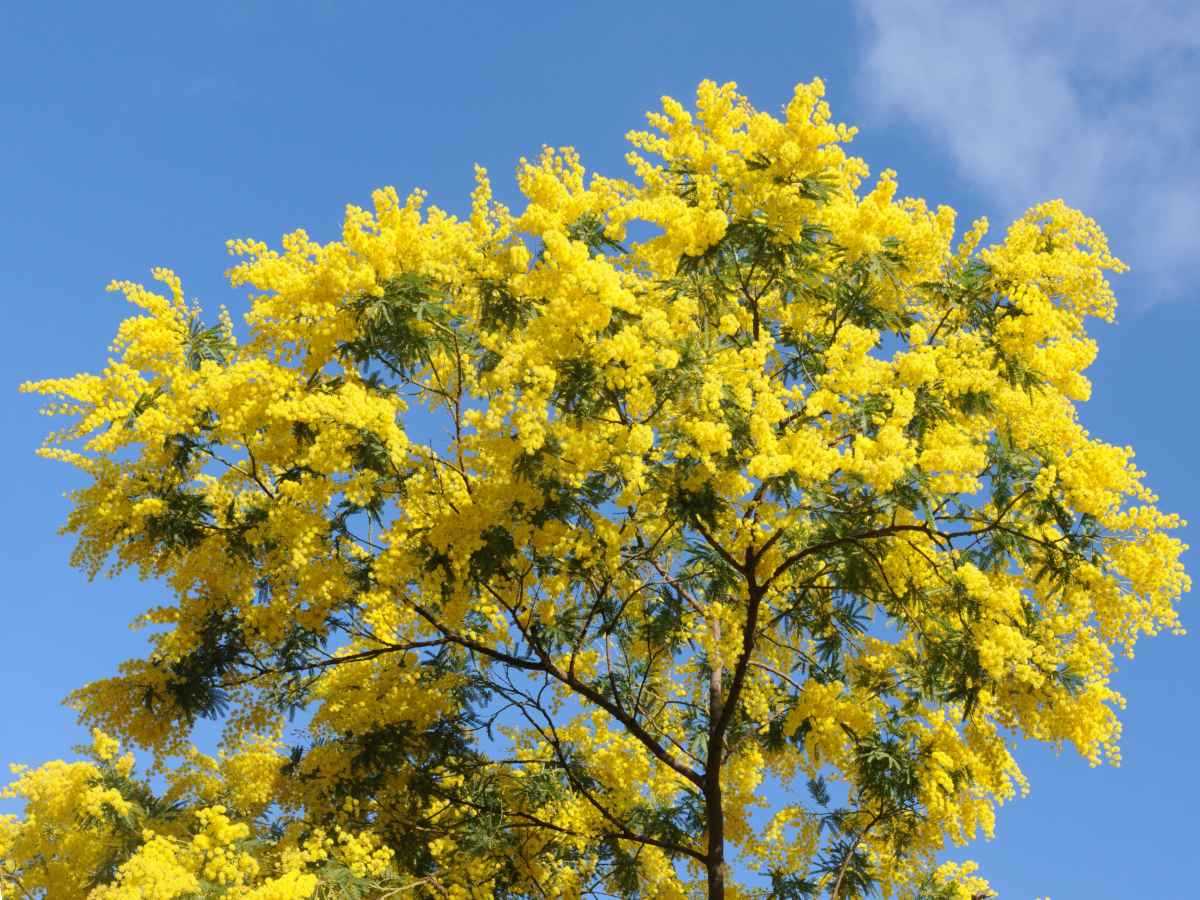
One of the most common problems with growing mimosa is overwatering. Mimosa plants are susceptible to root rot, so it is essential to let the soil dry out between waterings. Overwatering can lead to yellowing leaves, wilting, and even the death of the plant.
2. Underwatering
On the other hand, underwatering can also be a problem for mimosa plants. The soil should be slightly moist but not waterlogged. If the soil becomes too dry, the leaves may turn brown and fall off.
3. Lack of Light
Mimosa plants require bright, indirect light to thrive. If they are placed in a location with insufficient light, the plant may become weak and leggy. This can also cause the leaves to turn yellow and drop.
4. Pests
Mimosa plants can be susceptible to pests such as mealybugs and spider mites. These pests can cause damage to the leaves and stems, leading to stunted growth and a decline in overall health. Regularly inspect your plants for any signs of infestation and take appropriate measures to control the pests.
5. Temperature Stress
Mimosa plants prefer warm temperatures and can be sensitive to extreme fluctuations in temperature. Exposure to cold drafts or temperatures below 55 degrees Fahrenheit (13 degrees Celsius) can cause leaf drop and plant decline. It is essential to protect your mimosa plant from cold drafts and ensure it is kept in an environment with stable temperatures.
6. Nutrient Deficiencies
Mimosa plants require a balanced and regular supply of nutrients to thrive. A lack of essential nutrients can result in stunted growth and weakened plants. It is recommended to use a balanced fertilizer specifically formulated for houseplants to provide the necessary nutrients.
7. Improper Pruning
Pruning is essential for maintaining the shape and health of mimosa plants. However, improper pruning can lead to problems such as a loss of blooms, uneven growth, and plant stress. It is important to learn the proper techniques for pruning mimosa plants and avoid excessive or incorrect pruning practices.
Learn How to Deal with Common Issues When Growing Mimosa
1. Overwatering
Overwatering is a common problem when growing mimosa plants. Mimosa plants prefer well-draining soil, so it’s important not to keep the soil too wet. To avoid overwatering:
- Allow the top inch of soil to dry out before watering.
- Use a well-draining potting mix and a pot with drainage holes.
- Water thoroughly, but make sure the excess water can drain out.
2. Underwatering
Underwatering can also be an issue for mimosa plants. Signs of underwatering include drooping leaves and dry soil. To prevent underwatering:
- Water the plant when the top inch of soil feels dry.
- Give the plant a thorough watering, allowing water to drain out of the bottom of the pot.
- Monitor the soil moisture regularly and adjust your watering schedule as needed.
3. Pests
Mimosa plants can be susceptible to pests such as aphids, mealybugs, and spider mites. To deal with pests:
- Inspect the plant regularly for signs of pests, such as yellowing leaves or sticky residue.
- If you spot pests, try washing them off with a strong stream of water or wiping them off with a damp cloth.
- If the infestation is severe, consider using an organic insecticidal soap or neem oil.
4. Fungal Diseases
Fungal diseases, such as powdery mildew or root rot, can affect mimosa plants. To prevent fungal diseases:
- Avoid overwatering and ensure the plant has good drainage.
- Provide adequate air circulation around the plant.
- If you notice signs of fungal diseases, such as white powdery patches or rotting roots, remove affected parts of the plant and treat with a fungicide if necessary.
5. Environmental Stress
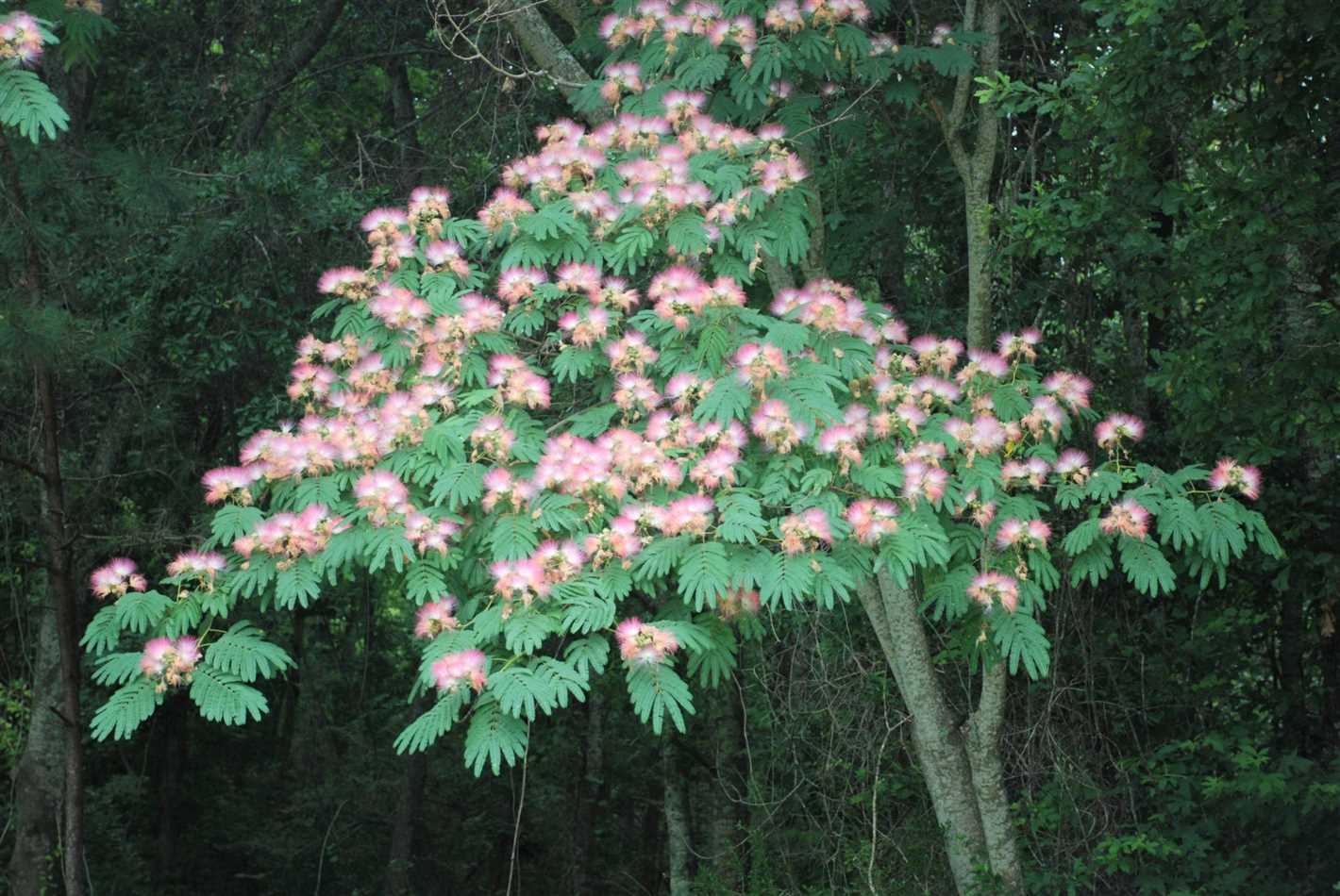
Mimosa plants can be sensitive to sudden changes in temperature, humidity, or light. To prevent environmental stress:
- Avoid placing the plant in drafts or near heating or cooling vents.
- Provide consistent temperatures and avoid extreme fluctuations.
- Keep the plant away from direct sunlight, which can cause leaf burn.
By following these tips, you can successfully deal with common issues that may arise when growing mimosa plants. Remember to pay attention to the plant’s needs and address any problems promptly to ensure its health and vitality.
Q&A:
What is Mimosa?
Mimosa is a small to medium-sized tree native to South and Central America.
How should I care for my Mimosa plant?
Mimosa plants are fairly low maintenance. They prefer bright, indirect light and should be watered regularly, allowing the top inch of soil to dry out between waterings.
Is Mimosa a fast-growing plant?
Yes, Mimosa is known for its fast growth. It can grow up to 1-2 feet per year under ideal conditions.
What are some common species of Mimosa?
Some common species of Mimosa include Mimosa pudica (sensitive plant), Mimosa tenuiflora (jurema), and Mimosa strigillosa (powderpuff).
What are some tips for propagating Mimosa plants?
Mimosa plants can be propagated from seeds or through stem cuttings. Seeds should be soaked in warm water before planting, and stem cuttings should be taken from healthy, mature plants and placed in moist soil until roots develop.
What are some pests that can affect Mimosa plants?
Some pests that can affect Mimosa plants include aphids, mealybugs, and spider mites. Regularly inspecting the plants and treating any infestations promptly can help prevent damage.
Are Mimosa plants toxic to pets?
Yes, Mimosa plants can be toxic to pets if ingested. It is best to keep them out of reach of cats and dogs.
Video:
How to grow Sensitive Plants (2019 Hanson Box)
